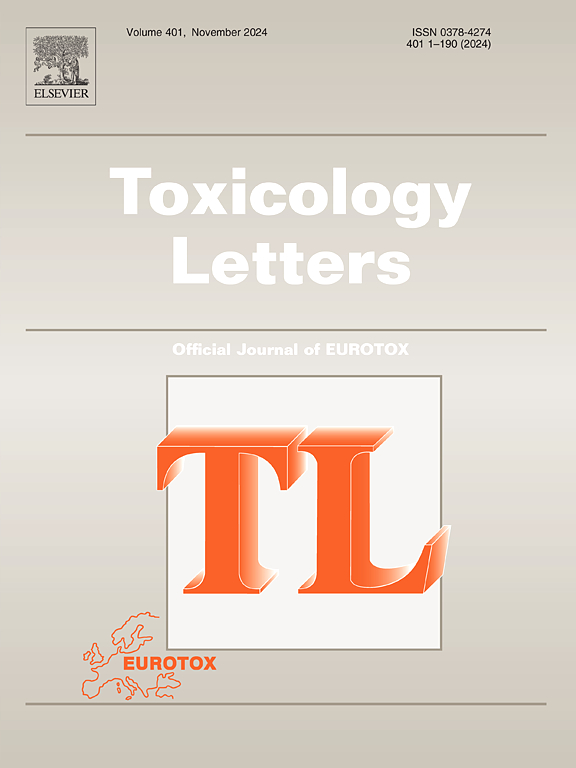尿代谢物是否反映职业性暴露于有机磷阻燃剂?电子废物回收工人个案研究。
IF 2.9
3区 医学
Q2 TOXICOLOGY
引用次数: 0
摘要
有机磷酸酯(OPEs)通常用于电子设备,以满足安全标准,但电子废物回收(e-recycling)工人可能会在工作场所大量接触到这些潜在的有害化合物。我们研究了加拿大电子回收设施中尿OPE代谢物与其母体化合物在空气中的关系。我们收集了六个电子回收设施工人的个人空气样本和下班后的尿液样本。我们采用线性和Tobit回归模型来评估三苯基磷酸(TPhP)和三(2-氯乙基)磷酸(TCEP)和两种代谢物,三(2-氯异丙基)磷酸(TCPP)和两种代谢物,三(1,3-二氯-2-丙基)磷酸(TDCPP)和三(2-丁氧乙基)磷酸(TBOEP)和各一种代谢物的空气浓度之间的关系。85名参与者,大多数是男性(78%),年龄在25至54岁之间,在90-100%的空气样本中检测到OPEs浓度,TPhP, TCEP, TBOEP和TDCPP的几何平均值分别为351,404,261和250皮摩尔每立方米。其相应代谢物的检出率在32-98%之间。包括尿流率作为协变量的回归模型显示,TCEP的空气浓度增加一倍,其代谢物增加42-107%,TBOEP的空气浓度增加一倍,其代谢物增加77%。由于缺乏OPEs的毒物动力学数据,因此无法确定适当的尿液代谢物来监测OPEs的职业暴露。这些额外的数据,结合工作场所环境信息,可能有助于澄清主要的接触途径和相应的贡献来源。本文章由计算机程序翻译,如有差异,请以英文原文为准。
Do urinary metabolites reflect occupational exposure to organophosphate flame retardants? A case study in electronic waste recycling workers.
Organophosphate esters (OPEs) are commonly used in electronic devices to meet safety standards, but electronic-waste recycling (e-recycling) workers may face significant exposure to those potentially hazardous compounds in their workplace. We examined the relationship between urinary OPE metabolites and their parent compounds in the air, in Canadian e-recycling facilities. We collected personal air samples and end-of-shift urine samples from workers at six e-recycling facilities. We employed linear and Tobit regression models to assess associations between air concentrations of triphenyl phosphate (TPhP) and three metabolites, of tris (2-chloroethyl) phosphate (TCEP) and two metabolites, of tris (2-chloroisopropyl) phosphate (TCPP) and two metabolites, of tris (1,3-dichloro-2-propyl) phosphate (TDCPP), and of tris (2-butoxyethyl) phosphate (TBOEP) and one metabolite each. The 85 participants, mostly male (78 %) and aged between 25 and 54, had concentrations of OPEs detected in 90–100 % of air samples, with geometric means of TPhP, TCEP, TBOEP and TDCPP, of 351, 404, 261 and 250 picomoles per cubic metre respectively. The proportion of detection of their corresponding metabolites varied between 32 % and 98 %. Regression models including the urinary flow rate as a covariate showed that a doubling of the air concentration of TCEP was associated with a 42–107 % increase in its metabolites, and a doubling of air concentration of TBOEP, with a 77 % increase. The paucity of data on the toxicokinetics of OPEs limits the determination of appropriate urinary metabolites to monitor OPE occupational exposure. Such additional data, in combination with workplace contextual information, may help clarify the major routes of exposure and the corresponding contributing sources.
求助全文
通过发布文献求助,成功后即可免费获取论文全文。
去求助
来源期刊

Toxicology letters
医学-毒理学
CiteScore
7.10
自引率
2.90%
发文量
897
审稿时长
33 days
期刊介绍:
An international journal for the rapid publication of novel reports on a range of aspects of toxicology, especially mechanisms of toxicity.
 求助内容:
求助内容: 应助结果提醒方式:
应助结果提醒方式:


